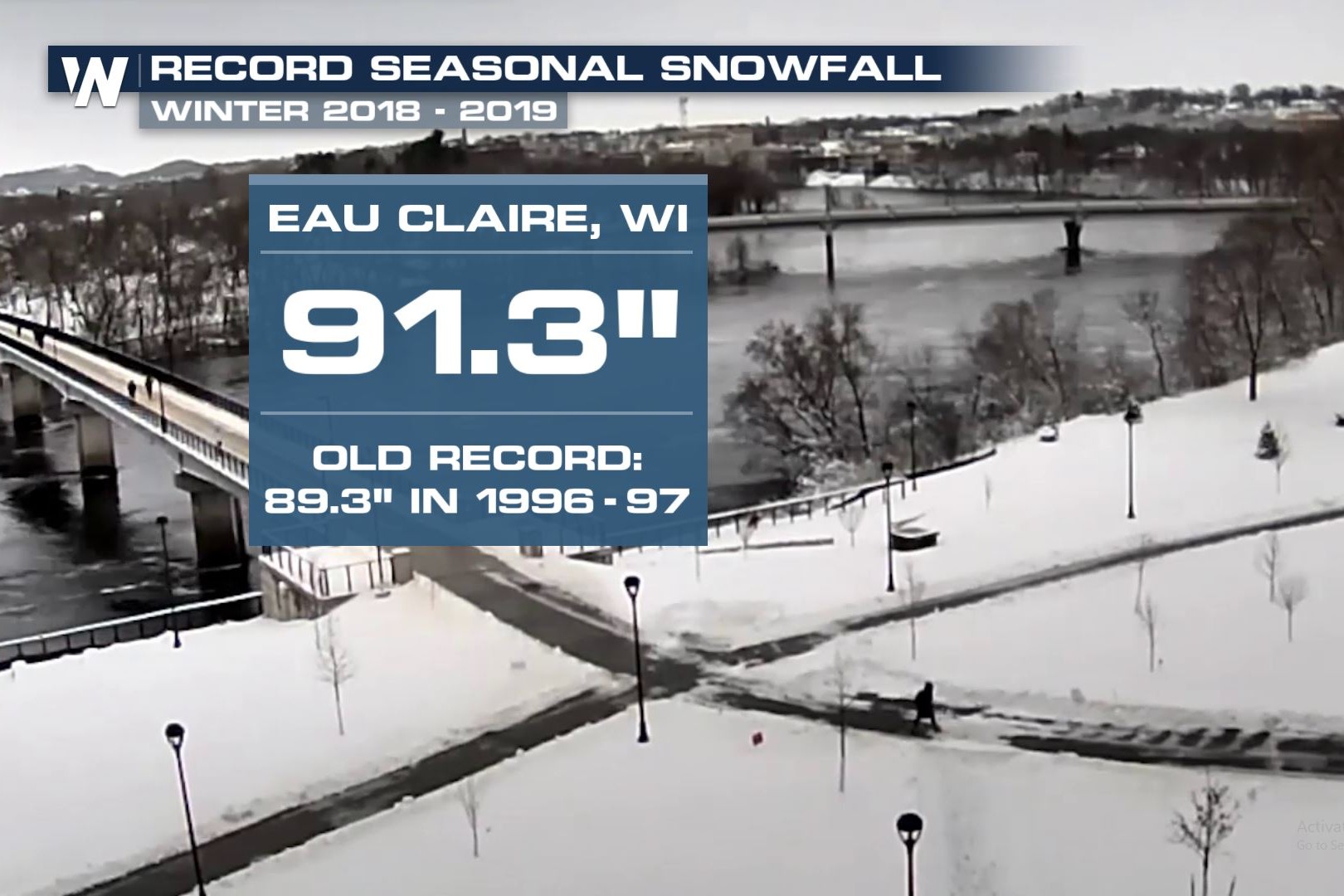
Ever wondered what makes Eau Claire weather so unique? This city in Wisconsin experiences a wide range of weather patterns throughout the year. From snowy winters to warm summers, Eau Claire has it all. Did you know that the city can see temperature swings of over 100 degrees Fahrenheit between seasons? In January, temperatures can drop to a chilly -10°F, while July can bring highs of 85°F or more. Rainfall is another interesting aspect, with the city receiving about 32 inches annually. Thunderstorms are common in summer, adding to the area's dynamic weather. Whether you're a weather enthusiast or just curious, these 25 facts will give you a deeper understanding of Eau Claire's climate.
Eau Claire's Unique Climate
Eau Claire, Wisconsin, boasts a climate that can surprise even seasoned weather enthusiasts. From frigid winters to warm summers, the weather here has a personality all its own. Let's dive into some fascinating facts about Eau Claire's weather.
-
Eau Claire experiences a humid continental climate, characterized by large seasonal temperature differences, with warm to hot summers and cold winters.
-
Winter temperatures can plummet to an average low of 7°F in January, making it one of the coldest months of the year.
-
Summer highs often reach around 82°F in July, providing a stark contrast to the chilly winters.
-
The city receives an average annual snowfall of about 47 inches, turning it into a winter wonderland during the colder months.
-
Spring and fall are transitional seasons with moderate temperatures, making them ideal for outdoor activities.
Rain and Snow Patterns
Precipitation in Eau Claire is another interesting aspect of its weather. The city sees a mix of rain and snow throughout the year, contributing to its lush landscapes and snowy winters.
-
Eau Claire gets an average annual rainfall of approximately 32 inches, which helps maintain its green surroundings.
-
June is the wettest month, with an average of 4.5 inches of rain, often accompanied by thunderstorms.
-
February is the driest month, receiving only about 0.9 inches of precipitation, mostly in the form of snow.
-
Snowfall can start as early as October and sometimes extends into April, making for a long winter season.
-
Lake effect snow is rare in Eau Claire, as it is located far from the Great Lakes, which are the primary sources of this phenomenon.
Weather Extremes
Eau Claire's weather can be extreme at times, with record-breaking temperatures and unusual weather events.
-
The highest temperature ever recorded in Eau Claire was 104°F on July 13, 1936.
-
The coldest temperature ever recorded was a bone-chilling -41°F on January 30, 1951.
-
Tornadoes are rare but not unheard of in Eau Claire. The city has experienced a few tornadoes over the years, with the most notable one occurring on June 4, 1958.
-
Flooding can occur during the spring thaw when melting snow and rainwater combine, causing rivers and streams to overflow.
-
Blizzards are a common winter hazard, often bringing heavy snowfall and strong winds that can disrupt daily life.
Seasonal Highlights
Each season in Eau Claire brings its own set of weather-related highlights, making the city a year-round destination for weather watchers.
-
Spring blooms are a sight to behold, with temperatures gradually rising and flowers beginning to blossom.
-
Summer thunderstorms are frequent, often providing dramatic light shows and much-needed rain.
-
Autumn foliage is spectacular, with vibrant reds, oranges, and yellows painting the landscape.
-
Winter sports enthusiasts flock to Eau Claire for activities like skiing, snowboarding, and ice fishing.
-
Ice formations on the rivers and lakes create stunning natural sculptures during the coldest months.
Fun Weather Facts
Eau Claire's weather isn't just about temperatures and precipitation. There are plenty of quirky and fun facts that make the city's climate even more interesting.
-
Eau Claire's name means "Clear Water" in French, a nod to the clear rivers that run through the city, which can freeze over in winter.
-
The Chippewa River often freezes in winter, providing a unique opportunity for ice skating and ice fishing.
-
Foggy mornings are common in the fall, creating a mystical atmosphere in the early hours.
-
Aurora Borealis sightings are possible during periods of high solar activity, adding a touch of magic to the night sky.
-
Weather folklore is alive and well in Eau Claire, with locals often predicting the weather based on animal behavior and natural signs.
Eau Claire's weather is as diverse as it is fascinating. From extreme temperatures to beautiful seasonal changes, there's always something interesting happening in this Wisconsin city.
Final Thoughts on Eau Claire Weather
Eau Claire weather is full of surprises. From frigid winters to warm summers, it keeps residents on their toes. The average snowfall of 47 inches makes it a winter wonderland, while the summer highs of around 82°F offer perfect days for outdoor fun. Spring and fall bring their own charm with mild temperatures and beautiful foliage. Thunderstorms are common in summer, adding a bit of excitement to the season.
Knowing these facts helps you prepare for what’s coming. Whether you’re a local or just visiting, understanding the weather patterns can make your time in Eau Claire more enjoyable. So, pack accordingly, stay informed, and embrace the unique climate this city offers. With its diverse weather, Eau Claire truly has something for everyone, no matter the season.
Was this page helpful?
Our commitment to delivering trustworthy and engaging content is at the heart of what we do. Each fact on our site is contributed by real users like you, bringing a wealth of diverse insights and information. To ensure the highest standards of accuracy and reliability, our dedicated editors meticulously review each submission. This process guarantees that the facts we share are not only fascinating but also credible. Trust in our commitment to quality and authenticity as you explore and learn with us.
